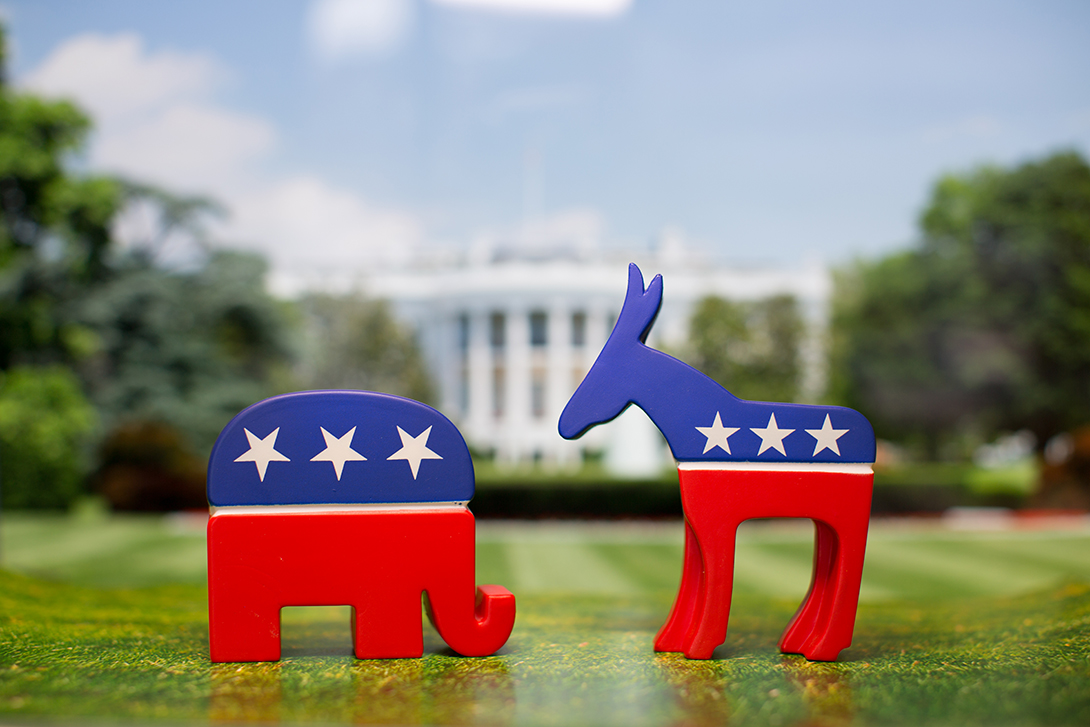By Julyssa Lopez
The third presidential debate Wednesday drew approximately 71.6 viewers eager to see the final showdown between Donald Trump and Hillary Clinton. With just weeks left until the election, people watched carefully to see how the candidates would fare.
Michael Cornfield, associate professor at the Graduate School of Political Management, analyzed the event on the Rhetorical Recap, published through GSPM. Below, George Washington Today highlights excerpts from his piece to answer the main questions lingering after the debate.
1. How did the candidates fare?
“Given her widening lead, Clinton needed only to continue to control her emotions, talk like a lawyer when pressed on her contradictions and weaknesses and avoid a big mistake. Trump had to show self-control in order to change the subject away from his temperament.
As expected, the candidates clashed at every turn. Neither seemed capable of or inclined to provide an uplifting vision in a persuasive manner, not even at the close.”
2. What about Trump’s refusal to say whether he would accept the election results?
“Trump handed waverers in his party elite and the sliver of the undecided electorate a stunning rationale to reject him. It was a breakdown and breakaway exchange, and real-time reaction data confirms that many viewers recognized it instantly.
[The] passage is a crucible: A presidential candidate in a televised debate called the American election system rigged, the American media corrupt, his opponent a criminal, millions of people as fraudulently registered, with scant and dubious to no evidence on each charge, as reasons enough in advance not to commit to accept the election results, along with the stated desire to keep his audience in suspense.
The four-minute exchange and related comments set up two and perhaps three very big speeches for the hours after the election returns are announced. Trump might back away from his charge, call for rebellion or (my guess) something disjointed in between. The deeply unsettled among those who voted for him will need to be addressed with a firm but calm invitation to reconciliation by the president-elect and, should there be actual resistance, by the outgoing president.”
3. What will happen after the election?
“We will not only hear more from Donald Trump after the election, we will hear about him, as his conduct in his career and his campaign will be held up as examples of what needs to be reformed. In the instance at hand, the rigged election controversy that Trump has fomented exposes both a strength and a flaw in our Constitutional system. The strength is that the extensive decentralization of election administration serves to isolate any problems that may arise from overzealous partisans and hackers the world round. The flaw, as pointed out a decade ago by law professor Sanford Levinson in “Our Democratic Constitution: Where the Constitution Goes Wrong,” is that 10 weeks is too long a wait for the transition to go into effect. The 20th Amendment was a step in the right direction but not big enough.
Consequently, if there is trouble, the continuity of the government of the United States of America will be perilously and needlessly dependent on the words and actions of a lame-duck president and Congress and the rhetoric of the president-elect and the losing nominee.”
Michael Cornfield will continue to recap every major national speech through the 2017 State of the Union Address. You can find previous recaps here.


